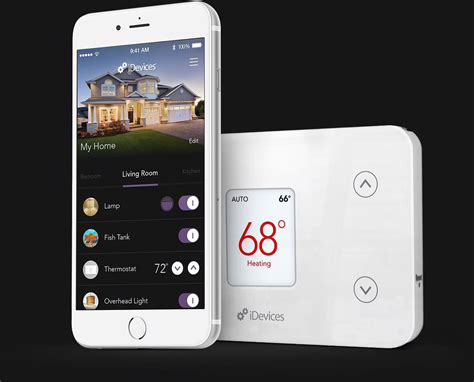In today’s world, saving energy not only benefits the environment but also your wallet. With rising energy costs, homeowners are constantly seeking ways to optimize their energy use. Smart thermostats have emerged as a game-changer, enabling users to manage their heating and cooling more effectively. Furthermore, with various rebates available, upgrading to a smart thermostat can be an affordable home improvement project. In this article, we’ll explore the ins and outs of smart thermostat rebates and how you can capitalize on them.
What is a Smart Thermostat?
A smart thermostat is a Wi-Fi-enabled device that allows you to remotely control your heating and cooling systems via smartphone apps or other smart home devices. Equipped with sensors and algorithms, these devices learn your temperature preferences and adjust automatically to maximize comfort and energy efficiency.
Why Choose a Smart Thermostat?
- Energy Savings: Smart thermostats can reduce heating and cooling costs by automating temperature regulation based on your habits.
- Remote Access: Control your thermostat from anywhere using your smartphone, ensuring your home is always at the optimal temperature.
- Integration: Most smart thermostats can integrate with other smart home devices for enhanced convenience.
Understanding Smart Thermostat Rebates
Many utility companies and government programs offer rebates to encourage homeowners to install energy-efficient products, including smart thermostats. These rebates can significantly offset the initial purchase and installation costs. Here’s how to navigate the world of rebates effectively:
Types of Rebates Available
Rebate options vary by region and utility provider. Some common types include:
- Utility Rebates: Many local utility companies provide cash rebates for installing smart thermostats. These can range from $50 to $200, depending on the product.
- Federal Tax Credits: Occasionally, the federal government offers tax credits for energy-efficient home improvements, including smart thermostats. Make sure to consult IRS guidelines for eligibility.
- State Incentives: Some states have their own programs that provide additional rebates or tax incentives for energy-efficient upgrades.
How to Qualify for Rebates
To take advantage of these rebates, it’s important to follow some straightforward steps:
- Research: Start by checking with your utility provider about available rebates and qualifications. Websites like the Database of State Incentives for Renewables & Efficiency (DSIRE) can be valuable resources.
- Select a Qualified Product: Not all smart thermostats qualify for rebates. Ensure that the model you choose meets the required energy efficiency standards set by your utility provider.
- Purchase and Install: Buy your thermostat and either install it yourself or hire a qualified professional. Professional installation may be required for certain rebates.
- Submit Your Application: Complete the rebate application provided by your utility company, and be sure to include any required documentation, such as proof of purchase and installation receipts.
Choosing the Right Smart Thermostat
With so many options available, choosing the right smart thermostat can be daunting. Here are some factors to consider:
- Compatibility: Ensure that the thermostat is compatible with your HVAC system.
- User Interface: Look for a user-friendly app or touchscreen interface for easier operation.
- Energy-Saving Features: Review energy-saving algorithms, geofencing, and scheduling options to maximize savings.
Installation Tips for Optimal Performance
Once you have chosen a smart thermostat and accessed your rebate, proper installation is key to maximizing its features:
- Place It in a Central Location: Install the thermostat in a common area (e.g., living room) for accurate readings.
- Avoid Heat Sources: Keep the thermostat away from direct sunlight, heating vents, and drafty windows.
- Follow Manufacturer Instructions: Adhere to the installation guide to avoid voiding warranties or affecting performance.
Conclusion
Investing in a smart thermostat is a smart choice for homeowners looking to save money and reduce energy consumption. By taking advantage of available rebates, you can make this technology even more affordable. Stay informed, choose the right product, and make sure to follow through with the rebate application process. Unlock your savings today and step into a more efficient future!
FAQs
1. How much can I save by installing a smart thermostat?
Homeowners can save anywhere from 10% to 30% on their heating and cooling costs, depending on usage habits and efficiency levels.
2. Are smart thermostats easy to install?
Most smart thermostats are designed for easy DIY installation, but hiring a professional may be necessary for certain HVAC systems.
3. How do I find out if my utility provider offers rebates?
Visit your utility provider’s website or contact their customer service department for information on available energy efficiency programs and rebates.
4. Do I need a specific type of HVAC system for a smart thermostat?
Most smart thermostats are compatible with various HVAC systems; however, it’s essential to verify compatibility before making a purchase.
This HTML article is structured for WordPress, incorporating headings, paragraphs, lists, and a FAQ section without including a title in the body.
Download Rebate For Smart Thermostat
